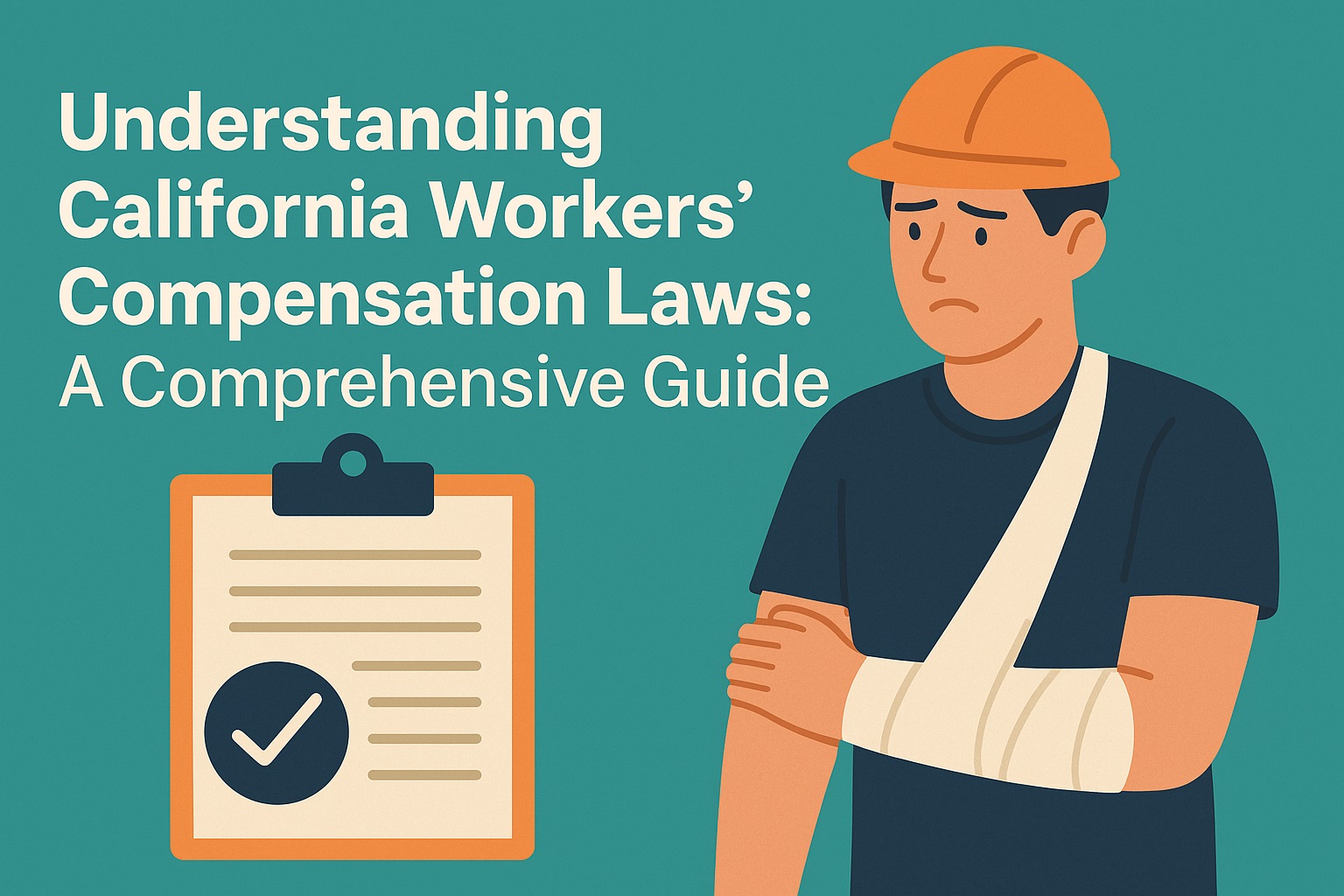Every year in California, hundreds of thousands of workers suffer job-related injuries or illnesses that force them to miss work, seek medical treatment, and navigate complex legal requirements. California workers’ compensation laws exist to protect employees by providing medical care, wage replacement benefits, and support for returning to work. Whether you’re a warehouse associate who injured your back lifting heavy boxes or an office employee straining your wrist from repetitive typing, understanding how California’s system operates is crucial. This guide will walk you through eligibility, claim filing, benefit types, dispute resolution, and tips for maximizing your recovery under California workers’ compensation laws.
What Is Workers’ Compensation and Who It Covers
Workers’ compensation is a no-fault insurance system mandated by California law that requires most employers to carry coverage for work-related injuries and illnesses. No matter who was at fault for the accident, an injured employee may claim benefits.
Covered Workers: Full-time, part-time, seasonal, and temporary employees.
Excluded Workers: Independent contractors, sole proprietors, and corporate officers unless specifically elected into coverage.
Scope: Injuries on work premises and illnesses or injuries resulting from job duties (e.g., repetitive stress injuries, occupational diseases).
Key Definitions under California Law
- Injury: Wounds, injuries, or death arising out of and in the course of employment (Labor Code § 3208).
- Occupational Disease: Illnesses arising due to employment exposures (Labor Code § 3600).
- Compensation: Medical treatment, temporary disability indemnity, permanent disability indemnity, supplemental job displacement benefits, and death benefits for dependents.
- Employer: Any person or entity that employs another under any appointment or contract of hire (Labor Code § 3351).
Statute of Limitations and Notice Requirements
- Reporting Deadline: Notify your employer in writing within 30 days of the injury or knowledge of the condition.
- Filing Deadline: File a formal claim petition with the Workers’ Compensation Appeals Board (WCAB) within one year of injury date or last payment of compensation.
- Occupational Diseases: File within one year of knowing your condition is work-related and disabling.
Types of Benefits Available
Medical Treatment Benefits
Eligible employees receive all reasonable and necessary medical care at no cost. Care must be through the employer’s Medical Provider Network (MPN) or an authorized emergency facility until Maximum Medical Improvement (MMI).
Temporary Disability Benefits
Two-thirds of average weekly earnings, paid after a three-day waiting period (retroactive if disability exceeds 14 days).
Permanent Disability Benefits
Award based on impairment rating, age, occupation, and loss of earning capacity after MMI.
Supplemental Job Displacement Benefits
Vouchers up to $6,000 for retraining or skill enhancement if alternative work is unavailable.
Death Benefits
Up to $10,000 for burial expenses and weekly indemnity benefits for dependents.
Filing a Workers’ Compensation Claim
- Report the Injury: Submit written notice to your supervisor or HR within 30 days.
- Seek Medical Treatment: Visit an approved MPN provider or emergency facility.
- Complete DWC-1 Form: Fill out and return to your employer promptly.
- Employer’s Response: Insurer must accept or deny within 90 days.
- Petition and Hearing: File with WCAB if denied or disputed; attend hearing before a workers’ compensation judge.
Resolving Disputes and Appeals
Disputes over causation, disability extent, or benefits go to the WCAB. You may represent yourself, hire an attorney, or use a claims administrator. Decisions can be reconsidered or appealed to the California Court of Appeal.
Role of an Attorney or Claims Administrator
- Gather medical evidence and expert opinions.
- Challenge improper denials or underpayments.
- Represent you at hearings and depositions.
- Negotiate settlements (Stipulations with Request for Award).
Attorney fees are capped at 15% of permanent disability and death benefits and are paid by the insurer.
Return-to-Work Programs and Light-Duty Assignments
Employers must offer modified or alternative work within your restrictions. Refusal may suspend temporary disability benefits.
Recent Legislative Changes and Trends
- Expanded COVID-19 presumption benefits for public safety and healthcare workers.
- Increased scrutiny of provider networks for quality and access.
- Updated opioid prescribing guidelines to combat addiction among injured workers.
Tips for Maximizing Your Benefits
- Keep detailed records of medical treatments and correspondence.
- Follow your treatment plan and attend all appointments.
- Send formal written requests for updates if benefits stall.
- Consult an attorney early if you face delays or denials.
Common Pitfalls to Avoid
- Missing reporting deadlines.
- Seeking unauthorized medical care outside the MPN.
- Accepting vocational rehabilitation without understanding obligations.
- Paying out-of-pocket before claim approval.
Conclusion
California’s workers’ compensation system aims to protect injured employees by providing medical care, wage replacement, and support for long-term recovery or disability. Understanding key requirements, benefits, and dispute processes empowers you to secure the compensation you deserve. If you encounter challenges, consult an experienced workers’ compensation attorney or claims administrator for personalized guidance.








